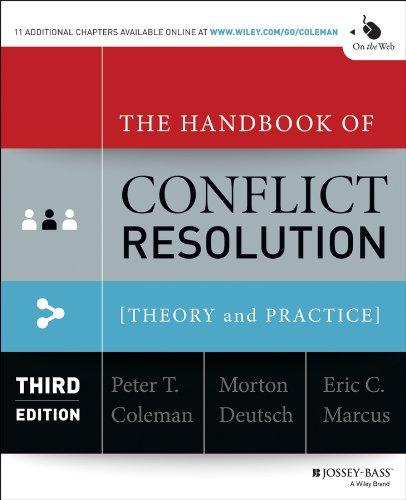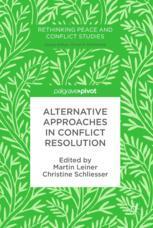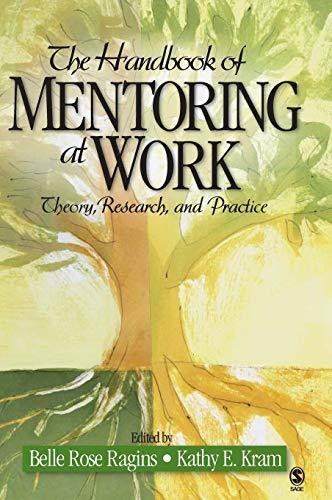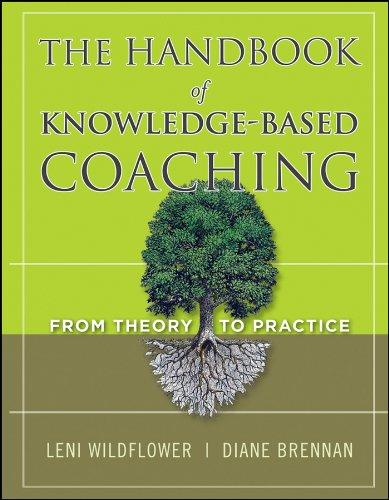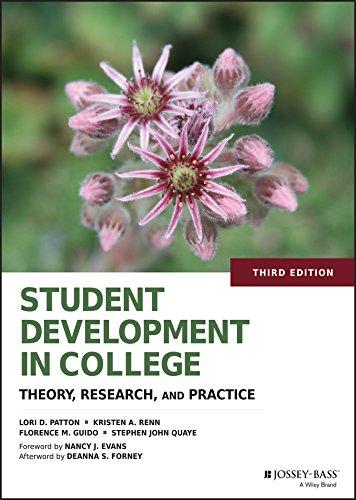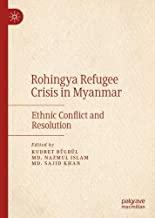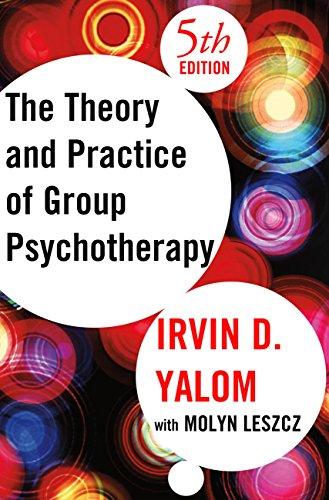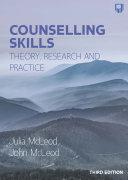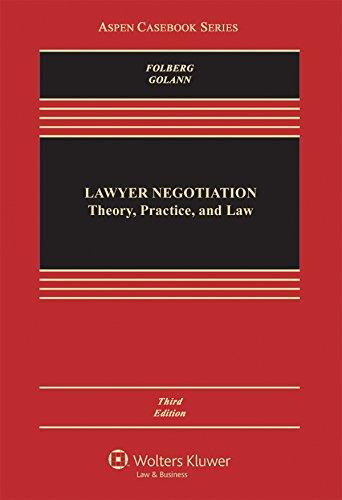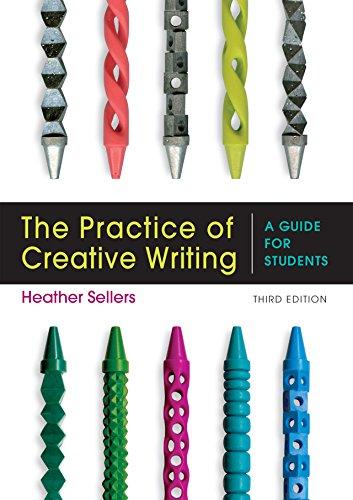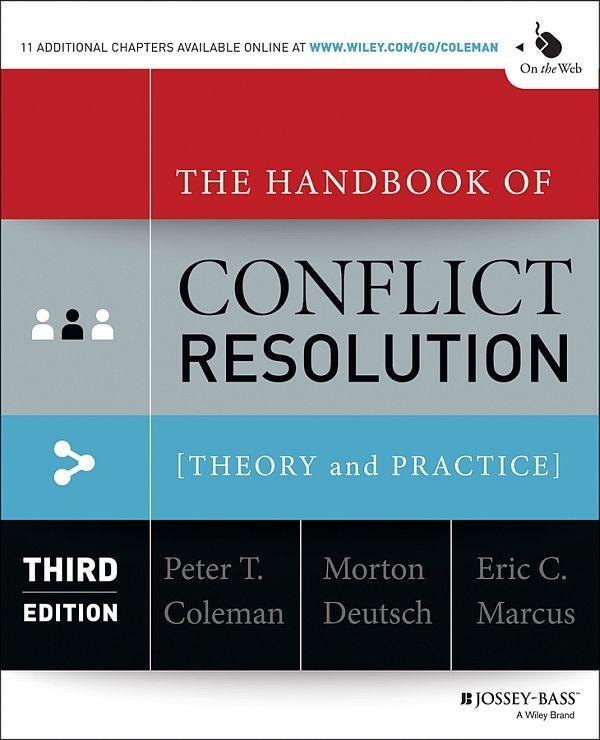Visit to download the full and correct content document: https://ebookmass.com/product/the-handbook-of-conflict-resolution-theory-and-practic e-3rd-edition-ebook-pdf/
More products digital (pdf, epub, mobi) instant download maybe you interests ...
Alternative Approaches in Conflict Resolution 1st Edition Martin Leiner
https://ebookmass.com/product/alternative-approaches-in-conflictresolution-1st-edition-martin-leiner/
The Handbook of Mentoring at Work: Theory, Research, and Practice 1st Edition
https://ebookmass.com/product/the-handbook-of-mentoring-at-worktheory-research-and-practice-1st-edition/
The Handbook of Knowledge-Based Coaching: From Theory to Practice – Ebook PDF Version
https://ebookmass.com/product/the-handbook-of-knowledge-basedcoaching-from-theory-to-practice-ebook-pdf-version/
Student Development in College: Theory, Research, and Practice 3rd Edition, (Ebook PDF)
https://ebookmass.com/product/student-development-in-collegetheory-research-and-practice-3rd-edition-ebook-pdf/
Rohingya Refugee Crisis in Myanmar: Ethnic Conflict and Resolution Kudret
Bülbül
https://ebookmass.com/product/rohingya-refugee-crisis-in-myanmarethnic-conflict-and-resolution-kudret-bulbul/
The Theory and Practice of Group Psychotherapy 5th Edition, (Ebook PDF)
https://ebookmass.com/product/the-theory-and-practice-of-grouppsychotherapy-5th-edition-ebook-pdf/
Counselling Skills: Theory, Research and Practice, 3rd Ed 3rd Edition John Mcleod
https://ebookmass.com/product/counselling-skills-theory-researchand-practice-3rd-ed-3rd-edition-john-mcleod/
Lawyer Negotiation: Theory, Practice, and Law (Aspen Casebook Series) 3rd Edition – Ebook PDF Version
https://ebookmass.com/product/lawyer-negotiation-theory-practiceand-law-aspen-casebook-series-3rd-edition-ebook-pdf-version/
The Practice of Creative Writings 3rd Edition, (Ebook PDF)
https://ebookmass.com/product/the-practice-of-creativewritings-3rd-edition-ebook-pdf/
Chapter Twenty-Three: Changing Minds
An Overview of Persuasion Theory and Research
Persuasion in the Context of Conflict Resolution
Promoting Open-Minded Processing
Conclusion
Chapter Twenty-Four: Learning through Reflection on Experience
The Roots of The Framework in Adult Learning Theory
Our Framework of Learning Through Reflection on Experience
Why Coaches and Facilitators Can be Catalysts for Learning Through Reflection
Encouraging Dialogue and New Ideas in Our Learning Through Reflection on Experience
Framework
Conclusion
Part Five: Culture and Conflict
*Chapter Twenty-Five: The Alchemy of Change
Defining Culture
Cultural Fluency: What is its Importance, and How Does it Work?
Building Cultural Fluency
Neuroscience as Conflict Resolution Resource
Arts-Based Approaches to Conflict Resolution
Implications for Pedagogy
Implications for Theory and Practice
*Chapter Twenty-Six: Indigenous Lessons for Conflict Resolution
Indigenous Knowledge and Practice
Harnessing of Collective Wisdom for Global Conflict Resolution, Justice, and Peace
Applications and Conclusions
*Chapter Twenty-Seven: Multiculturalism and Conflict
Multiculturalism as a Social Movement
Applications of Multiculturalism
A Theoretical Approach to Managing Multicultural
Conflict: The Integration-Adaptation Model
Case Study: Multiculturalism and the Boy Scouts of America
Conclusion
Chapter Twenty-Eight: Cooperative and Competitive Conflict in China
Should the Theory of Cooperation and Competition be Applied in China?
Research Methods in China
East Asian Tests of The Theory
Cross-Cultural Studies
Chinese Values for Conflict Management in China
Leadership in a Hierarchical Society
Developing the Theory Through Research in China
Summary and Conclusion
Part Six: Difficult Conflicts
Chapter Twenty-Nine: Aggression and Violence
Defining Aggression and Violence
Theories of Aggression and Violence
Addressing Aggression and Violence: Implications for Practice
Conclusion
Chapter Thirty: Intractable Conflict
Defining Intractable Conflict
Approaches to Addressing Intractable Conflict: Five Paradigms
Components of Intractable Conflicts
A Dynamical Systems Model of Intractable Conflict
Ten Guidelines for Altering the Attractor
Landscapes of Intractable Conflicts
Implications for Training
Conclusion
*Chapter Thirty-One: The Pragmatics of Peace with Justice
Inherent Tensions
Exploring the Practice
Challenges to Synergy
Latest Developments
Moving Forward: Operationalizing Peace with Justice
*Chapter Thirty-Two: Terrorism
The Terrorists
Terrorist Profiles: The Political, the Religious, the Criminal
Terrorists in Action
Strategic Options for Engaging Terrorists
Knowing the Culture, Psychology, Values and Goals of The Terrorist Group
Negotiating with Terrorists
Rogue States
Trust and Historical Gestures
The Victims
Media and Public Opinion
Negotiation Effectiveness
Conclusion
Part Seven: Models of Practice
*Chapter Thirty-Three: Negotiation
Theoretical and Empirical Roots of Integrative Negotiation
Why Our Emphasis on Integrative Negotiation?
How to do Integrative Negotiation Well in Typical Conflicts
How to do Integrative Negotiation Well in Difficult to Resolve Conflicts
Conclusion
Chapter Thirty-Four: The Mediation of Conflict
Theory and Research
Implications for Understanding and Managing Conflict
Implications for Training
Conclusion
Chapter Thirty-Five: Teaching Conflict Resolution Skills in a Workshop
Insights from Practice
Overview of The Coleman Raider Workshop Design
Workshop Objectives and Pedagogy
Seven Workshop Modules
Conclusion
Postscript
*Chapter Thirty-Six: Creating Constructive
Communication through Dialogue
Dialogic Approach to Communication
Dialogue Processes
Problems in Communication During Conflict
Preventing and Overcoming Problems in Communication
Creating New Social Worlds Made from Dialogic Communication
*Chapter Thirty-Seven: An Empirically Based Approach to Couples’ Conflict
Stage 1: The Discovery of Reliable Patterns of Interaction
Stage 2: Prediction and the Replication of the Prediction
Stage 3: Theory Building, Understanding, and Prevention and Intervention
Summary Of Effectiveness Evidence for Intervention and Prevention
Chapter Thirty-Eight: Managing Conflict through Large Group Methods
What are Large Group Intervention Methods?
Three Types of Large Group Methods
New Frontiers: Applications to Peace Building and Legislative Processes
Conclusion
*Chapter Thirty-Nine: Group Relations and Conflict Resolution
Group Dynamics and Group Relations: A Brief History
Conflict in Groups: A Diagnostic Framework
Case Study: The Case of Pink Power
Toward Conflict Resolution: A Group Relations
Model of Intervention
Conclusion
*Chapter Forty: Reconciliation between Groups
The Origins of Violence and Basic Psychological Needs
Security and Reconciliation
The Principles and Practices of Reconciliation
Justice Processes
Moving Toward Forgiveness
The Multiple Processes in Reconciliation
Conclusion
*Chapter Forty-One: Social Networks, Social Media, and Conflict Resolution
Traditional Social Network Analysis
Social Network Research on Conflict
Social Media
Dynamic Network Theory
Conflict Resolution Strategies in Social Networks
Network Conflict Worksheet
International Linkages
Online Dispute Resolution
Conclusion
*Chapter Forty-Two: Using Research Findings in Practice
Doing Research on Conflict Management and Resolution
Communicating Research Findings
Applying Research Findings
Learning Gains
Conclusion
*Chapter Forty-Three: Nonviolent Struggle
Examples of Nonviolent Struggle
Definition of Nonviolent Struggle
Importance of Nonviolent Struggle
Media Coverage of Nonviolent Struggle
The Future of Nonviolent Action
Conclusion
Glossary
Part Eight: Looking to the Future
Chapter Forty-Four: A Framework for Thinking about Research on Conflict Resolution Initiatives
Types of Research
Audiences for Research
Research Strategies
Research Evaluating Conflict Resolution Initiatives
Conclusion
Chapter Forty-Five: Some Research Frontiers in the Study of Conflict and Its Resolution
Origins and Impact of Conflict
Strategic Choice
Escalation and Intractability
Readiness for Conflict Resolution
Negotiation
Mediation
Conclusion
Concluding Overview
About the Editors
About the
Contributors
More from Wiley
Name Index
Subject Index
End User License Agreement
List of Tables
Chapter Four: Constructive Controversy
Table 4.1 Process of Controversy and Concurrence Seeking
Table 4.2 Meta-Analysis of Academic Controversy Studies: Weighted Effect Sizes
Chapter Five: Trust, Trust Development, and Trust Repair
Table 5.1 Sixteen Relationship Types Based on Dominant Trust and Distrust Elements
Chapter Seventeen: Personality and Conflict
Table 17.1 Normal Frustrations, Typical Defense Mechanisms, Developmental Crises, Psychopathology, and Adult Character Traits with Several Early Stages of Psychosexual Development
Chapter Eighteen: The Development of Conflict Resolution Skills
Table 18.1 Piaget’s Social Cognitive Approach to Children’s Development
Table 18.2 Comparison of Social Cognitive Approaches to Development
Table 18.3 Kegan’s Cognitive Orders of Consciousness
Table 18.4 Erikson’s Psychosocial Stages in Development
Chapter Twenty-Four: Learning through Reflection on Experience
Table 24.1 Action Science Map around Sexual Harassment in the Workplace
Chapter Twenty-Seven: Multiculturalism and Conflict
Table 27.1 I-AM-Inducing Strategies and Interventions at the Individual and Organizational Levels
Chapter Thirty-One: The Pragmatics of Peace with Justice
Table 31.1 Key Differences between Human Rights and Mediation
Chapter Thirty-Five: Teaching Conflict Resolution Skills in a Workshop
Table 35.1 Coleman Raider AEIOU Coding Sheet (Abridged)
Chapter Forty: Reconciliation between Groups
Table 40.1 Reconciliation and the Prevention of New Violence
Chapter Forty-Two: Using Research Findings in Practice
Table 42.1 xamples of Methodologies in Four Research Traditions
List of Illustrations
Chapter Four: Constructive Controversy
Figure 4.1 Theory of Controversy
Chapter Six: Power and Conflict
Figure 6.1 The Situated Model of Power and Conflict
Figure 6.2 Psychological Orientations in the Basic Conflict Stimulus Field
Chapter Nine: The PSDM Model
Figure 9.1 An Integrated Model of Problem Solving and Decision Making in Conflict Resolution
Figure 9.1 An Integrated Model of Problem Solving and Decision Making in Conflict Resolution
Chapter Fourteen: Group Decision Making in Conflict
Figure 14.1 The Groupthink-Polythink Continuum
Chapter Fifteen: Natural-Born Peacemakers?
Figure 15.1 Gender-Based Differences in SelfConstrual and Social Role Expectations
Chapter Sixteen: Resolving Intractable Intergroup Conflicts
Figure 16.1 The Influence of Implicit Theories about Groups on Support for Conciliatory Political Actions Tendencies
Chapter Eighteen: The Development of Conflict Resolution Skills
Figure 19.1 The Shadow Box
Figure 19.2 Objects and Shadows in Experiment One: Geometrical Objects and Lego Objects
Chapter Twenty-One: Creativity in the Outcomes of Conflict
Figure 21.1 The Agreement Circumplex
Chapter Twenty-Four: Learning through Reflection on Experience
Figure 24.1 Marsick and Watkins’ Informal and Incidental Learning Model
Chapter Thirty: Intractable Conflict
Figure 30.1 Feedback Loop Analysis of Mozambique Conflict and Peace
Chapter Thirty-Four: The Mediation of Conflict
Figure 34.1 Twelve Stages of Mediator Moves
Chapter Thirty-Five: Teaching Conflict Resolution Skills in a Workshop
Figure 35.1 Coleman Raider Resolution Continuum
Figure 35.2 Coleman Raider Reframing Formula
Figure 35.3 Coleman Raider Negotiation Planning Form: A Community Dialogue
Figure 35.4 Colman Raider “Bare-Bones” Model
Figure 35.5 Coleman Raider Filter Check Model
Figure 35.6 Coleman Raider Meditation Model
Chapter Thirty-Six: Creating Constructive Communication through Dialogue
Figure 36.1 Elements of Communication Process
Chapter Thirty-Seven: An Empirically Based Approach to Couples’ Conflic
Figure 37.1 The Sound Relationship House Theory
Chapter Thirty-Eight: Managing Conflict through Large Group Methods
Figure 38.1 Large-Group Methods for Creating the Future
Figure 38.2 Large-Group Methods for Work Design
Figure 38.3 Large-Group Methods for Discussion and Decision Making
Chapter Forty-One: Social Networks, Social Media, and Conflict Resolution
Figure 41.1 Network Chart Comparisons
Figure 41.2 Network Conflict Worksheet
PREFACE
The field of conflict resolution continues to develop rapidly. As a consequence, we have updated and revised the second edition of this Handbook. Almost all of the chapters in the second edition have been updated; in some, the revisions have been extensive, and in others, only minor changes seemed necessary. Also, we have added new chapters on topics that were not covered or needed more coverage than they received in the first two editions. Given the scope of growth in the field, we have expanded the book considerably. And in order to make this expansion more cost effective for the readership, we have developed a new online section of the book.
The new chapters for this edition have an asterisk next to them in the Contents. They are important, original contributions to the field of conflict resolution by outstanding scholars and practitioners, as are the updated chapters from the first two editions.
In the Preface to the first edition, we characterized the purpose of the Handbook, its organization, professional value, and orientation. This book is meant for those who wish to deepen their understanding of the processes involved in conflicts and their knowledge of how to manage them constructively. It provides the theoretical underpinnings that shed light on the fundamental social psychological processes involved in understanding and managing conflicts at all levels: interpersonal, intergroup, organizational, and international.
As an area of scholarship and professional practice, conflict resolution is relatively young, having emerged as a discipline after World War II. Practice and theory have been only loosely linked. This book aims to foster closer
connection between the two by demonstrating the relevance of theoretical ideas and empirical research to practice. Although the link between theory and practice is inherently bidirectional, this book primarily emphasizes the path from theory to practice.
The theoretical ideas presented in this book were for the most part not developed specifically in relation to understanding conflict or to facilitate professional practice in this area. They have relevance to any area in which it is important to understand the basic processes in social interactions of all sorts and in various contexts—at work; in politics, schools, families, clinics, courts, and bedrooms; on highways; and elsewhere. For the purposes of this book, the authors have developed their chapters to bring out the relevance of the theories and research being discussed to understanding conflict specifically.
When appropriate, chapters are organized to address three general topics. The first deals with the theoretical ideas in the substantive area being discussed. The second draws out the implications of these ideas for understanding conflict, and the third is concerned with the implications of these ideas for educating or training people to manage their conflicts more constructively.
TheHandbookofConflictResolutionis divided into parts somewhat arbitrarily, and inevitably there is overlap among them. The introductory chapter gives examples of real conflicts and indicates the kinds of questions one might pose to understand what is going on in the conflicts— questions that are addressed in many of the chapters. The Introduction also has a brief discussion of the orientations of practitioners on the one hand and researcher-theorists on the other, to offer some insight into the misunderstandings that often occur between these two groups. It also contains an abbreviated history of the study
of conflict from a social psychological perspective and indicates the sorts of questions that have been and are being addressed.
Parts 1 through 4 comprise the major portion of the book and present the theoretical ideas that have been developed (mainly in areas of social psychology) that are useful in understanding conflict processes as well as in helping people learn to manage their conflicts constructively. The authors of the chapters in these parts discuss the practical implications of their ideas for conflict, as well as the theoretical foundations underlying the implications they draw.
Even apart from their usefulness for conflict, the theoretical ideas should be of value to anyone interested in understanding the nature of basic social psychological processes and involved in social interactions of any kind. The Contents pages for parts 1 through 4 indicate the broad range of theoretical ideas and their implications for conflict. They are grouped, arbitrarily, into interpersonal and intergroup processes, intrapsychic and intragroup processes, personal differences, and creativity and change. Almost all of the chapters discuss matters that cross such arbitrary boundaries. New chapters (chapters 3, 14, and 15) respectively deal with privilege and justice, group decision making, and gender, as they relate to conflict.
Part 5 contains four chapters that consider the relation between culture and conflict, each from a somewhat different perspective. Chapters 25 through 27 (all new chapters) examine some of the common sorts of misunderstanding that can arise when people from varying cultural backgrounds interact and what can be done to help them learn to understand one another’s cultural background. Then chapter 28 examines an influential theoretical approach to conflict resolution developed in the
United States to see how it is (or is not) applicable to conflict in the entirely different context of China.
Part 6 is concerned with difficult conflicts. Two revised chapters (29 and 30) examine aggression and violence and intractable conflict, respectively. Two new chapters have been added: chapter 31 is focused on the connections between human rights and conflicts and chapter 32 on terrorism.
Part 7 is most directly concerned with practice. Its eleven chapters are all authored by leaders in the field and focus on theory and research behind common models of practice such as negotiation (33), mediation (34), the Coleman Raider model for training in constructive conflict resolution (35), dialogue processes (36), and John Gottman’s model of conflict management with couples (37). These chapters then go on to strategies for working with larger groups (38), employing group relations theory (39), reconciliation between groups (40), and employing social network theory to conflict analysis and resolution (41). Chapter 42 focuses on using research findings in practice and chapter 43 on nonviolence and conflict.
In part 8, we look to the future. Chapter 44 presents a framework for thinking about research on conflict resolution training. As of this writing, there has been little good and systematic research in this area. If the field is to develop and have a bright future, it needs more research. Chapter 45 presents the authors’ views of the future directions that basic research on conflict and its resolution might well take.
The concluding chapter is an overview and commentary on the current state of the field; it considers issues such as what substantive questions need to be addressed that have not received the attention they warrant—that is, the practice as well as theoretical issues.
The final (online) section contains what we have labeled our domain-specific chapters. The expert authors of these chapters were asked to familiarize themselves with the basic processes chapters of this Handbook and then to speak to these models and practices in their chapters, making links to existing chapters explicit. They include chapters in the following domains: gender conflict in marriage (chapter 46), conflict resolution in schools (47), conflict in organizations (48), labor relations and conflict (49), law and dispute resolution (50), police and conflict resolution (51), participatory action research, conflict resolution, and communities (52), religion as a third side for peace (53), nongovernmental organizations as a vehicle for collective action (54), managing environmental conflict (55), and international conflict resolution (56).
The contributors to this edition of TheHandbookofConflict Resolutionare an illustrious group of experts in the areas with which their chapters are concerned. We have asked them to write chapters that can be easily understood by readers who are not social scientists but are also credible to other experts in their areas. Furthermore, we suggested to them that they limit considerably the number of technical references in their chapter. Given the opaqueness of much writing in the social sciences, it is surprising how well the contributors have succeeded in writing clear, informative, interesting, useful, and authoritative chapters.
We believe TheHandbookofConflictResolutionis accessible and valuable to a wide variety of groups with an interest in constructive conflict management: to undergraduate and graduate students, as well as their professors, in a number of academic fields such as psychology, education, sociology, political science, business, international relations, law, social work, and health care. It is also of value to practitioners such as conflict resolution trainers and consultants, negotiators, mediators, and those
who manage or supervise others. In editing this Handbook, we have learned a great deal, so we believe that even those considered experts can find much of value in it.
One final word about the orientation of this Handbook: it is concerned with finding cooperative, win-win solutions to conflict, no matter how difficult. The “black arts” of conflict (such as violence, coercion, intimidation, deceit, blackmail, and seduction) are not discussed except, if at all, in the context of how to respond to or prevent the use of such tactics by oneself or others. In our view, such tactics are used too often, are commonly destructive and selfdefeating, and are less productive in the long run than a constructive approach.
We thank our faculty colleagues who participated in an informal seminar on conflict resolution at Teachers College. The inspiration for this book emerged from the lively discussions in the seminar. We also thank Elizabeth Hernandez, Joseph Dillard, Kyong Mazzaro, Nick Redding, Christine Chung, and Regina Kim, who typed, e-mailed, did editorial work, and provided other invaluable services necessary to produce a completed manuscript.
January2014
Peter T. Coleman, Morton Deutsch, and Eric C. Marcus New York, New York
INTRODUCTION
Morton Deutsch
In this introduction, I give some examples of conflicts and indicate the kinds of questions one might pose to understand what is going on in the conflicts—questions that are addressed in many of the following chapters. It also includes a brief discussion of the orientations of both practitioners and researcher-theorists to provide some insight into the misunderstandings that often occur between these two groups. It concludes with an abbreviated history of the study of conflict from a social psychological perspective.
A CONFLICT BETWEEN HUSBAND AND WIFE
Some time ago, I had the opportunity to do therapeutic work with a professional couple involved in bitter conflicts over issues they considered nonnegotiable. The destructiveness of their way of dealing with their conflicts was reflected in their tendency to escalate a dispute about almost any specific issue (e.g., a household chore, the child’s bedtime) into a power struggle in which each spouse felt that his or her self-esteem or core identity was at stake. The destructive process resulted in (as well as from) justified mutual suspicion; correctly perceived mutual hostility; a win-lose orientation to their conflicts; a tendency to act so as to lead the other to respond in a way that would confirm one’s worst suspicion; inability to understand and empathize with the other’s needs and vulnerabilities; and reluctance, based on stubborn pride, nursed grudges, and fear of humiliation, to initiate or
respond to a positive, generous action so as to break out of the escalating vicious cycle in which they were trapped.
Many couples in such conflicts do not seek help; they continue to abuse one another, sometimes violently, or they break up. The couple I worked with sought help for several reasons. On the one hand, their conflicts were becoming physically violent. This frightened them, and it also ran counter to their strongly held intellectual values regarding violence. On the other hand, there were strong constraints making it difficult for them to separate. Their child would suffer; they felt they would be considerably worse off economically; and they had mutually congenial intellectual, aesthetic, sexual, and recreational interests that would be difficult to continue engaging in together if they separated. As is often the case in such matters, it was the woman, being less ashamed to admit the need for help, who took the initiative to seek the assistance of a skilled third party. The wife, who worked (and preferred to do so), wanted the husband to share equally in the household and child care responsibilities; she considered equality of the genders to be a core personal value. The husband wanted a “traditional marriage” with a conventional division of responsibilities in which he would be the primary incomeproducing worker outside the home, while his wife would principally do the work related to the household and child care. The husband considered household work and child care inconsistent with his deeply rooted image of adult masculinity. The conflict seemed nonnegotiable to the couple. For the wife, it would mean betrayal of her feminist values to accept her husband’s terms; for him, it would violate his sense of male adult identity to become deeply involved in housework and child care.
Yet this nonnegotiable conflict became negotiable when, with the help of the therapist, the husband and wife were
able to listen to and really understand the other’s feelings and how their respective life experiences had led them to the views each held. Understanding the other’s position fully, and the feelings and experiences behind them, made each person feel less hurt and humiliated by the other’s position and readier to seek solutions that would accommodate the interests of both. They realized that with their joint incomes, they could afford to pay for household and child care help that would enable the wife to be considerably less burdened by such responsibilities without increasing the husband’s chores in these areas (though doing so, of course, lessened the amount of money they had available for other purposes).
This solution was not perfect for either partner. Each would have preferred that the other share his or her own view of what a marriage should be like. But their deeper understanding of the other’s position made them feel less humiliated and threatened by it and less defensive toward the other. It also enabled them to negotiate a mutually acceptable agreement that lessened tensions despite the continuing differences in basic perspective. (See Deutsch, 1988, for further discussion of negotiating the nonnegotiable.)
AN INTERGROUP CONFLICT AT A SCHOOL
A conflict has developed between two groups of teachers at a high school in New York City: the Black Teachers Caucus (BTC) and the newly formed Site-Based Management (SBM) Committee. The SBM committee’s eighteen members consist of the principal, the union chairperson, a representative from the parents’ association, a student, and an elected teacher representative from each academic department. All of the SBM members are European
American, with the exception of an African American teacher chosen from the math department.
At the last SBM meeting, the math teacher proposed that an official voting seat be designated for an African American teacher. After much heated discussion, the proposal was voted down. But the problems raised by the proposal did not go away. Much personal bitterness has ensued.
The school has experienced a recent demographic shift from a predominantly white student body to one that is now mainly composed of students of color. This has occurred for two reasons. First, there has been a large influx of students of color from the city-owned housing projects constructed in the district during the past two years. Second, as a result, the number of science-oriented students coming from other parts of the city has dropped.
The student population is now 40 percent African American, 30 percent Latino American, 25 percent European American, and 5 percent Asian American. The faculty is 90 percent European American and 10 percent African American. The parents’ association is 100 percent European American.
The Position of the BTC
The BTC believes that the SBM committee needs its input to make the changes needed—specifically, the curriculum is Eurocentric and many school policies are out of touch with the cultural perspective of the current student population. In addition, the caucus is very concerned about an increase in bias-related incidents in the community and wants to initiate antiracism classes at all grade levels.
The members of the BTC believe that although the majority of the management committee members are sincerely
interested in bringing about positive school change and are good, dedicated teachers, they lack personal understanding of the impact of racism on the African American experience. Some even seem to still value the old meltingpot approach to race relations, a position the caucus members believe is naive and dysfunctional when it comes to positive educational change.
The BTC believes that having its representative present as a voting member on the committee will add a needed multicultural and antiracist perspective at this critical time of change. The caucus wants to be part of this change and will not take no for an answer.
The Position of the European American SBM Committee Members
There are many reasons the European Americans voted against an African American seat on the SBM committee, and they deeply resent the implication that they are racists for so doing. First, they believe that if any particular black teacher wants a seat, he or she should go through regular democratic procedures and get elected by the respective department. New elections will be held in May.
Second, it would not be fair to give a special seat to the black teachers without opening up other seats for the Latino, Asian, Jewish, Greek, or “you name it” teachers. SBM is about department representation, the members say, not about representation based on race or ethnicity.
Third, designating a seat for blacks or establishing quotas of any kind based on race would give the appearance of catering to pressure from a special-interest group and be difficult to explain to the rest of the faculty and the parents’ association. They believe that the best direction for the school and society as a whole is a color-blind policy that would assimilate all races and ethnic groups into the great
